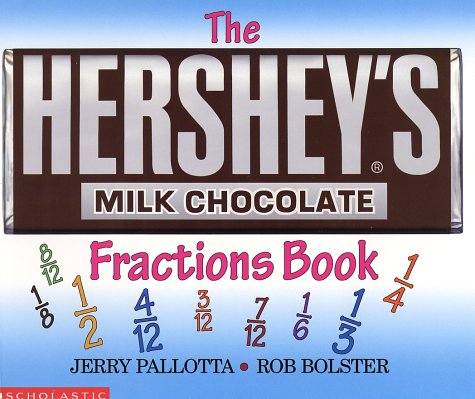Introduction – SOL 4.2 a. & b. focuses on the comparing, ordering, and representation of equivalent fractions and mixed numbers. For the student to be successful with these concepts, a clear understanding of SOL 2.3 (identifying parts of a whole to the tenths and the writing of fractions) is essential. The online resources below are aimed at addressing this topic from the perspective of both the educator and the student. Aside from online resources, the educator will want to include fraction strips and circles, along with class manipulatives to foster fraction concepts with his or her students. Fractions can be fun after all!
5 Best Books
- Working with Fractions by D. Adler and illustrated by E. Miller is aimed for ages 9 -12 years and offers graphic explanations of fraction problems. Definitions are given for numerator and denominator along with the function of comparison of fractions.
- Holiday Fractions by J. Roy and G. Roy are for readers 8 -12 years of age, grades 3 -7. Holiday fractions combine the holidays with fractions to bolster the student’s understanding of fractions.
- The Hershey’s Milk Chocolate Bar Fraction Book by Jerry Pallotta and illustrated by R. Bolster offer a “yummy” set of visuals to show how a chocolate bar can be divided into to rectangular blocks to represent fractional equivalents.
- Polar Bear Math by A. Nagda and C. Bickel is for students who already have a working knowledge of basic fractions (ages 7-12). Fractions and delightful polar bears are combined to broaden the student understanding of fractions. There are pictographs along with problems that compares and ask students to calculate fractions.
- Eating Fractions by B. McMillan is a book designed for students who may need a little more of a refresher on fraction basic (grades 2-3). The book shows children eating their way through various foods displayed in fraction form.
5 Best Web Sites for Kids
- Game – Fresh Baked Fractions. Site offers an interactive game where the student must choose the fraction that does not belong in the equivalent set. It is then displayed if the fraction chosen is correct and resets to a new problem.
- Math League will give definitions for fractions, equivalents, and comparisons of fractions. Be sure to click on each new page. Mixed fractions are also covered. Site offer good background information but requires reading and is technical.
- Fraction Fun is an interactive site where students can see visual representations of divided fraction squares, circles, triangles, and rectangles. Equivalent fractions uses a “put cursor over” the correct answer and if you see the smiling face, your choice is correct. Just use the pencil for “next” or “back”. Audio sounds included.
- Ordering Fractions Game is an game where the student will order a fraction by hanging it as a picture on the wall from smallest to largest. The student can rearrange the fractions and once all 5 fractions are displayed to the student’s liking, the student will click done and the game will display if the set was ordered correctly.
- Play a game of Equivalent Fractions or Comparing Unlike Fractions. First read though the background information on equivalent or comparing fractions. Then scroll down to practice. The website will give a problem where you choose the equivalent fraction from the list. If your answer is right, then you are given a new question. Scroll on down to the PLAY section to test your knowledge.
Additional Resources
- Cross Curricular Book, Music Math, by K. Collins explores how fractions are used in other content area of music. A lot can be said on 1/4, 1/8, and 1/2 (fraction) notes on a sheet of music.
- Fraction Jugglers, by R. Alexander, is a book of 19 fraction games along with 86 cards. The games build on the student’s understanding and application on how to manipulate fractions.
- Fraction posters, worksheets, and activities can be found all under one site. Enjoy.
- Funny and Fabulous Fraction Stories by D. Greenberg and J. Lee is a book of reproducible stories that end with a corresponding fraction problem for the student to solve. Intended for grades 3-6.
Conclusion
Though fractions can be confusing for many, learning the basic principles of fractions is a must as we use fractions many times throughout each day. How could we cook or even decide who got the biggest piece of the pie without them? I hope from the resources above you will find that teaching and learning about fractions can be exciting and manageable.

